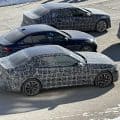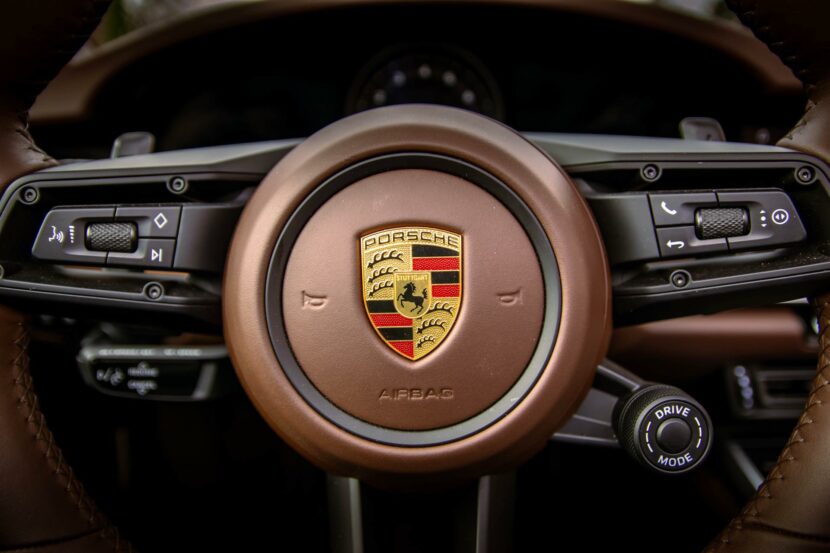When great minds think alike, some of the best work gets done. It’s much easier for two minds to work on the same project when they are both in sync with what the other is doing. And that philosophy goes into Tesla’s Autopilot system, which makes it possibly the best on the market right now.
Autopilot systems like Tesla’s aren’t new, so this isn’t some groundbreaking technology that the world has never seen before, though if you ask Tesla fans, it is. The Tesla Model S uses the array of sensors it’s already had, since 2014, to understand the world around it and drive along on its own and accelerate, brake and steer all on its own. It will even change lanes on its own, so long as the driver uses the indicator first and it will then change lanes when it deems it safe. This technology first became popular on the most recent Mercedes-Benz S Class and is now used by BMW, Audi, Cadillac and other automakers. So the technology isn’t new. However, Tesla does do a couple of things a bit different that helps out quite a bit.
The first difference between Tesla’s system and other competitor’s is something you’ll notice right away and is probably the most helpful — a massive visual display of the Autopilot system. The display shows your car along with the car in front of it and the distance between the two. This allows you to get a visual of what the car and its sensors see which, if you’re a control freak like me, gives you peace of mind that the car sees what it needs to see. Tesla’s Autopilot also gives a “fluid-line” graphic around the Tesla on the display which shows how close near objects are to the Tesla. It’s nice to be able to see what the car sees, as opposed to just trusting the system, this way both the driver’s and the car’s minds are aware of what’s happening. Great minds (I’m assuming) thinking alike.
Another interesting feature of Tesla’s Autopilot system is that it doesn’t require the driver to have their hands on the steering wheel. The systems in BMWs and Mercedes’ require the driver to keep at least one hand on the wheel or the cars will turn their systems off. The cars will often allow the drive to remove their hands for seconds at a time, but will be prompted to return their mitts to the wheel or else the car will return under driver control. The point of this is to not abdicate the responsibility of the driver. But Tesla’s Autopilot allows the driver to keep their hands in their lap and not touch a single control until they absolutely have to, in which case the Tesla will prompt its driver to take control because they must do something the Autopilot is incapable of doing. So it works well.
This Autopilot system, according to Tesla’s enigmatic owner, Elon Musk, is still in its Beta form, so there will be some more work done to it and in its final form, expect hands to be required on the wheel. This is likely to be done do by Tesla’s lawyers, as there is probably some strange legal liability concerns with allowing the car to drive without hands on the wheel. Or maybe Musk’s lawyers are good enough to allow for such luxuries, who knows, Musk is usually capable of some legal trickery.
This Autopilot system does need some fine tuning, as it is still in Beta form, and will get that tuning soon. The system still cannot account for traffic lights or stop signs. It’s perfectly fine in traffic, as the cars in front of the Tesla that stop for traffic lights will prompt the Tesla to stop. But if the Tesla is i front of the line, it won’t notice the traffic light turning red and the driver will have to take over. Minor gripe, obviously, but it would be nice to know that the car can save your ass if you take your eyes off the road for one second and the light turns red. It also tends to get a bit too close to very large vehicles, like trucks. But these are all easy fixes and will most likely be fixed quite soon. Remember, this is still a Beta.
While Tesla’s Autopilot isn’t a revolutionary idea, it is probably one of the best autonomous driving systems on the market. The idea of using sensors to basically drive the car through traffic has been around for a couple of years now, in some shape or form, but Tesla’s system is very well polished and uses a very helpful graphic display that helps the driver understand what’s happening in real time. So while Tesla’s Autopilot isn’t revolutionary, it is evolutionary and will probably set the standard for the industry. The graphic display is most likely something that will be adopted by other automakers. Audi and Mercedes-Benz already have excellent graphic gauge cluster displays they can utilize, while BMW will probably have to adopt one to use a similar display. Either way, Tesla’s new Autopilot adds some fresh ideas to the technology and should set the new standard in the industry.







































































